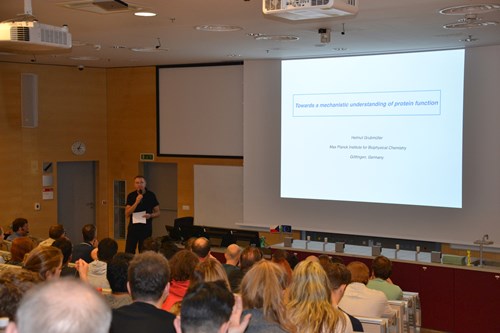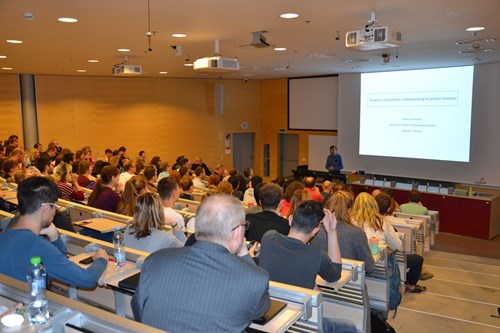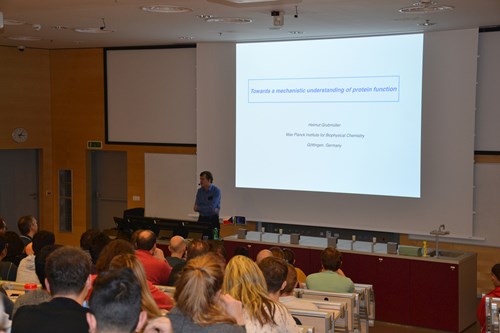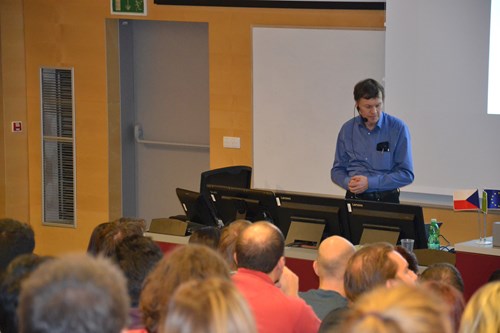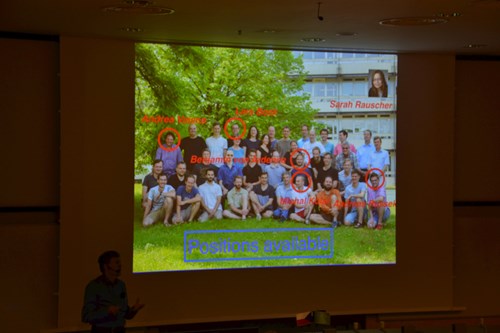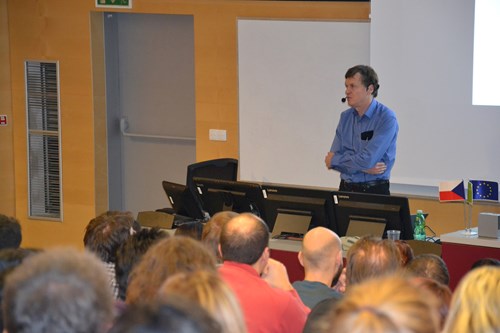About the lecture
Lars V. Bock, Michal Kolar, Andrea C. Vaiana, Andreas Russek, Benjamin von Ardenne, Helmut Grubmüller
Ribosomes are highly complex biological nanomachines which operate at many lengths and timescales. We combined single molecule, x-ray crystallographic, and cryo-EM data with atomistic simulations to elucidate how tRNA translocation and the action of antibiotics work at the molecular level. We show that tRNA translocation between A, P, and E sites is rate limiting, and identified dominant interactions. We also show that the so-called L1 stalk actively drives tRNA translocation and that 'polygamic' interactions dominate the intersubunit interface, thus explaining the detailed interaction free energy balance required to maintain both controlled affinity and fast translation We further describe a new combined allosteric mechanism for erythromycin-induced translational stalling of the antibiotics sensor peptide ErmB as well as nascent peptide dynamics in the ribosomal exit tunnel.
To study time-dependent ligand binding, we focus at streptavidin-biotin, which is one of the strongest non-covalent bonds known in nature and is widely used in biotechnology.
We show that the underlying free energy landscape which governs ligand binding and unbinding can be extracted from combined atomic force microscopy (AFM) and force probe simulation data, which covers loading rates of 11 orders of magnitude. Experiment and simulation show excellent agreement and reveal heterogeneity of the unbinding pathways and multiple binding states that depend on the applied loading rate. A new binding intermediate explains previous discrepancies between binding affinities and AFM experiments. Further, the loading rate dependent unbinding paths are characterized. We will, finally, take a more global view on the 'universe' of protein dynamics motion patterns and demonstrate that a systematic coverage of this 'dynasome' allows one to predict protein function.
[1] Arenz S, Bock LV, ... , Grubmüller H, Vaiana AC, Wilson DN. Nature Comm. 7, 12026 (2016)
[2] Fischer N, Neumann P, Bock LV, Maracci C, Wang Z, Paleskava A, Konevega AL, Schröder GF,
Grubmüller H, Ficner R, Rodnina MV, Stark H. Nature 540 (7631), 80-85 (2016)
[3] Bock LV, Blau C, Vaiana AC, Grubmüller H. Nucl. Acids Res. 43 (14), 6747–6760 (2015)
[4] Bock LV, Blau C, Schröder GF, Davydov II, Fischer N, Stark H, Rodnina MV, Vaiana AC,
Grubmüller H. Nature Struct. Molec. Biol. 20 (12), 1390-1396 (2013)
[5] Bock LV, Kolar MH, Grubmüller H. Curr. Opin. Struct. Biol. 49, 27–35 (2018)
[6] Hensen U, Meyer T, Haas J, Rex R, Vriend G, Grubmüller H. PLoS One 7, e33931 (2012)
[7] von Ardenne B, Grubmüller H, Nature Comm. 2, 2375 (2018)
